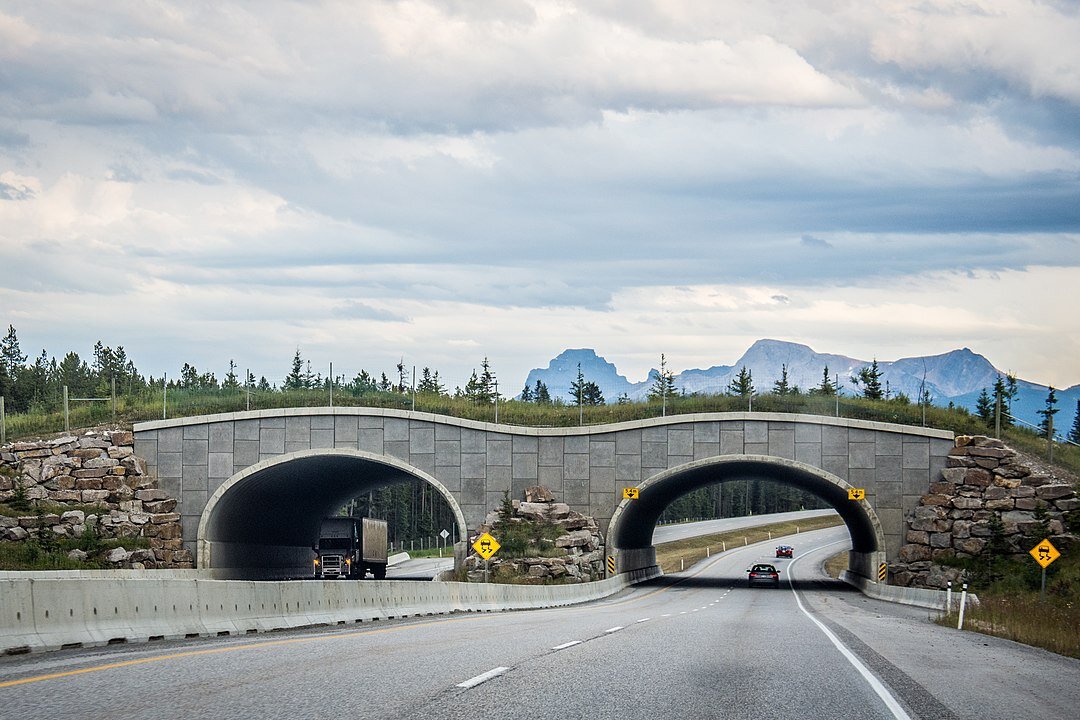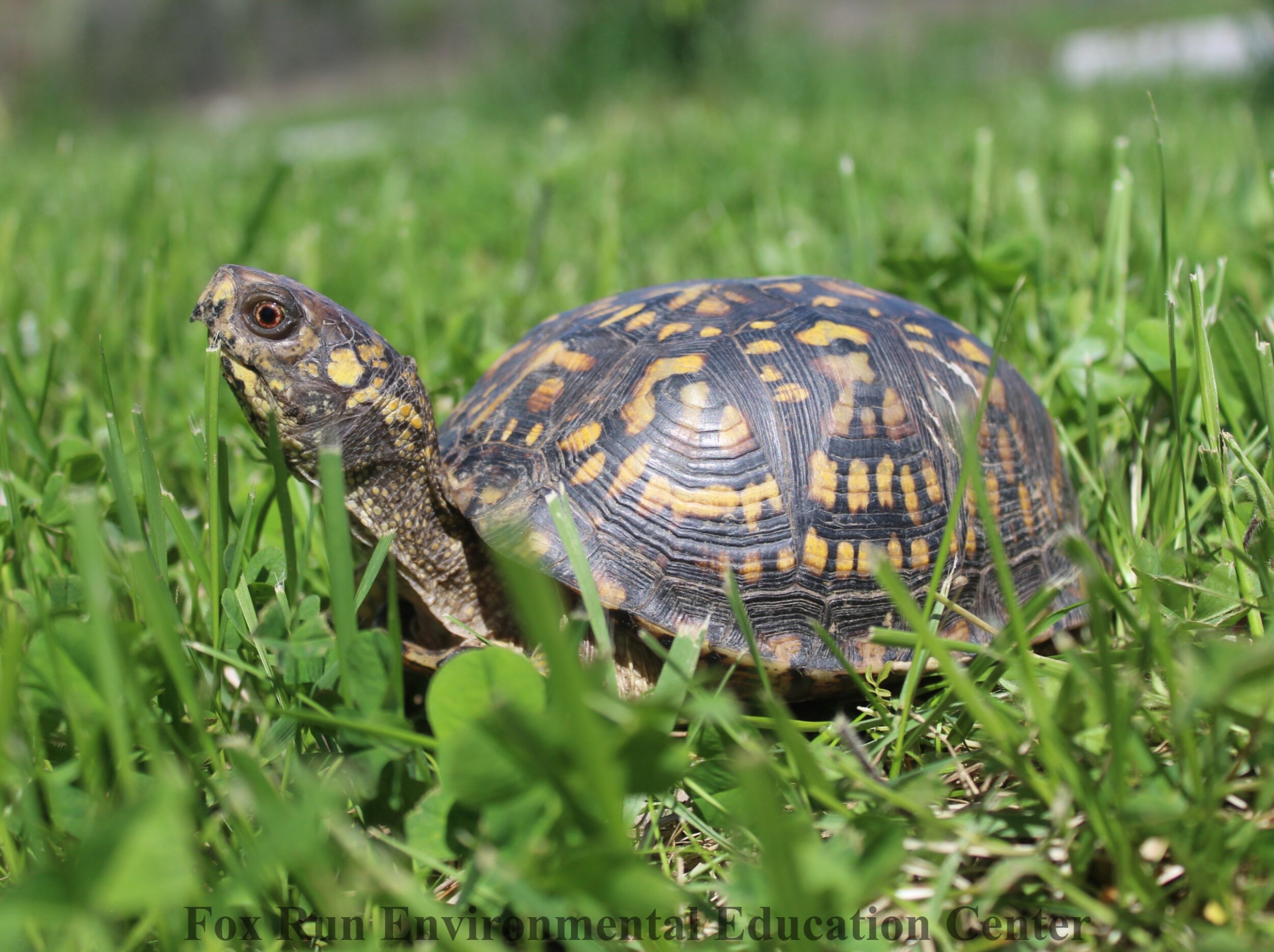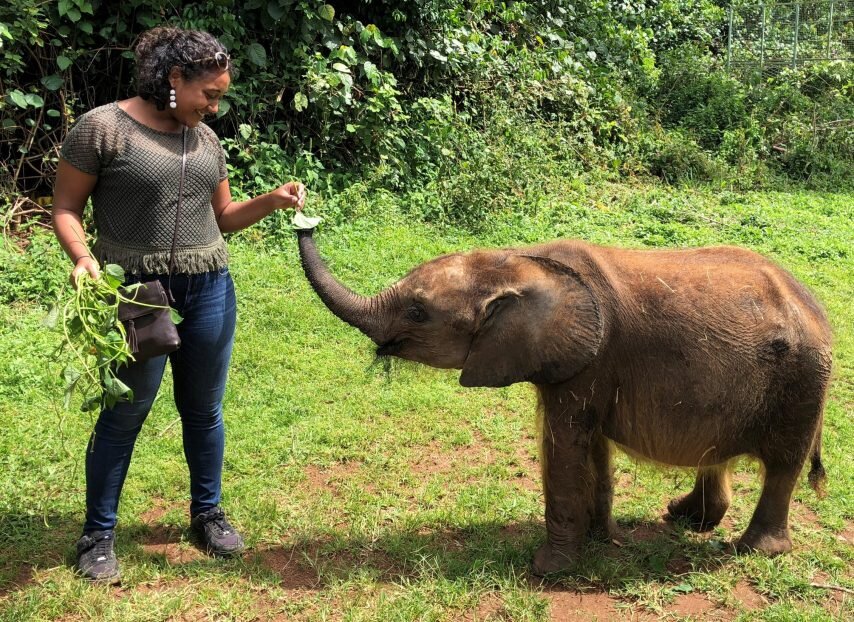Updated August 2024 by Ame Vanorio
Roads keep America moving. However, it’s important to remember that animals have places to be too. Wildlife crossings help them navigate roads safely.
From hunting for dinner to looking for a mate, wildlife needs to be able to roam to live healthy lives. However, passing over roadways, bridges, and dams, and around other human construction, can be risky and even deadly for most wildlife.
By providing shortcuts and pass-throughs, animal crossings help create critter-friendly ways for wildlife to navigate human landscapes. Wildlife crossings are essential for your safety too. In the United States, accidents caused by animal collisions cost more than eight billion dollars in medical costs and vehicle repairs annually.
Read on to learn all about the importance of wildlife crossings, and three ways you can help make a difference.
Wildlife Crossings Help Protect Endangered Species and Save Human Lives
When you think of wildlife crossings, white-tailed deer, opossums, or squirrels may come to mind. However, wildlife crossings also have a big impact on endangered species, human health, and safety.
There is a wide range of endangered species that are threatened by roadways. A report by the Federal Highway Administration (FHWA) estimated that there are 21 threatened and endangered species across the country whose leading cause of death is related to roadways.
Outside of conservation interests, wildlife crossings also protect public health. Prince Law Firm estimates that animal collisions cause around a million car crashes a year. The FHWA estimates that 10% of these collisions with wildlife causes injury or death to drivers and passengers.
These collisions get expensive. Deer-car collisions cost an average of $8,190, and an elk-vehicle collision can cost about $25,319. Considering how many animal collisions happen a year – even a one-million-dollar investment in wildlife crossings would pay itself back in just a handful of years.
Wildlife Crossings Have the Potential to Nearly Eliminate Road Death
Wildlife crossings are the difference between life and death for many animals. “You can get reductions of 85 to 95 percent with crossings and fencing that guide animals under or over highways,” said Rob Ament of Montana State University and the Western Transportation Institute.
The Paynes Prairie Preserve State Park in Florida is a great example of this in action. This park is known for its stunning array of plants, animals, and beautiful landscapes. Route 441 cuts through this park, and although it makes for convenient sightseeing, many animal casualties were caused along this stretch of road. In 2000, the Florida Department of Transportation decided to build eight culverts for wildlife crossing. Only a year after installing the culverts, animal mortality rates decreased by 93.5%.
Another example is wildlife crossings in Arizona. Arizona has constructed around 17 underpasses. These underpasses are enhanced with funnel fencing, which helps guide the animals to the crossing. These crossings have brought a 90% drop in wildlife-related highway accidents in one area of Arizona where elk migrate.
Based on this info, it’s clear that wildlife crossings are important to ensure that harm to animals and motorists are minimized.
Wildlife Crossings Help Habitat Conservation
Outside of preventing accidents, wildlife crossings help keep our wildlife happy and connected. A primary reason wildlife crossing exists is that they prevent habitat fragmentation.
Habitat fragmentation is when habitats are slowly divided or decrease in size by natural or human causes. Roads, urban sprawl and walls all restrict wildlife’s traditional habitats.
In a fragmented habitat, animals have more trouble finding a mate, hunting for dinner, or finding a comfortable place to have babies. There also might not be enough food to support the population of animals in that area. In the long term, this can impact biodiversity and cause ecosystem decay.
And finally, wildlife comes into danger along the ‘edge’ of their habitat. Habitat edges are often where roadways and other dangerous accidents happen. The more fragmented the habitat becomes, the more likely wildlife is to reach the ‘edge’ and be harmed or killed. Crossings help reduce the ‘edge’ of wildlife habitats by making it easy for them to access new and old areas.
Check out this fabulous video that explains the overwhelming success of wildlife crossings.
Wildlife Crossings are Carefully Chosen and Designed
Choosing the location for a wildlife crossing isn’t as simple as putting signs up where animals have been spotted. The type of crossing chosen depends on the types of animals in the area that will use it as well as the surrounding topography. Crossings are designed around the target species range and mobility. Crossings are also designed to maximize the number of species that will benefit.
Once the location is decided, it’s time to decide on the type of crossing. Crossings can include specially designed underpasses, overpasses, culverts, viaducts, and other infrastructure.
For example, to assist animals who prefer to be near water (like ducks, frogs, and other animals), an underpass with water flow might be constructed. If large animals are moving through, a larger underpass might be created.
State transportation agencies often work together with wildlife biologists to ensure that they’re creating easy paths for long-distance migration or movement due to seasonal changes. This planning and coordination helps ensure that crossings are as effective and critter friendly as possible.
A great video from PBS and the National Wildlife foundation about P-22
P-22 Los Angeles Mountain Lion
P-22, the mountain lion that became a symbol of urban wildlife conservation in Los Angeles, is a fascinating example of how wildlife can survive and even thrive in heavily urbanized environments. P-22 was born in the Santa Monica Mountains and, against all odds, made his way to Griffith Park in Los Angeles, crossing two of the busiest freeways in the world, the 405 and the 101, to reach his new home.
Griffith Park, a 4,310-acre urban wilderness in the heart of Los Angeles, became P-22's territory, where he lived relatively undetected for several years. His presence in such a densely populated area demonstrated the challenges faced by urban wildlife, particularly the problems of habitat fragmentation and genetic isolation.
P-22 in 2015 Photo by the National Park system
P-22 became a local celebrity after being captured on camera near the Hollywood sign in 2012. He was fitted with a collar and tracked by the National Park Service. His story has brought awareness to the broader issue of wildlife conservation in urban areas, highlighting the need for large-scale habitat connectivity efforts, such as the planned wildlife crossing at Liberty Canyon in Agoura Hills, which is designed to help protect mountain lions and other wildlife from the perils of highway crossings.
P-22's legacy is a powerful reminder of the resilience of wildlife and the importance of protecting and connecting habitats in the face of urban sprawl. His story has inspired conservationists, city planners, and residents alike to take action to ensure that future generations of wildlife have the space and resources they need to thrive.
Genetic Diversity and Habitat Fragmentation
Beyond reducing mortality, wildlife crossings play a crucial role in maintaining and enhancing genetic diversity within animal populations. Habitat fragmentation can isolate animal populations, leading to inbreeding and a subsequent decrease in genetic diversity, which can weaken populations and increase the risk of extinction.
Globally, 27% of mammal species are threatened with extinction because of habitat loss and fragmentation. Fragmentation happens when the animals can not move freely in there range due to human development such as roads and housing. These small and isolated patches of land are to small to maintain viable populations of which can contribute to extinction.
For example, studies on mountain lions in Southern California have shown that wildlife crossings allowed for the movement of individuals between previously isolated populations. This movement introduced new genetic material into inbred populations, thereby increasing genetic diversity and improving the overall health and resilience of the population.
Three Ways You Can Help Wildlife Crossings Be Effective
Proceed Through Wildlife Areas Carefully
Make sure to scan the road and shoulders ahead of you. If there’s minimal oncoming traffic, consider using your high beams so you have better visibility. Be extra cautious at dawn and dusk, since this is when many animals such as opossums are the most active. If a collision is inevitable, apply your breaks and stay in your lane.
If you believe you struck and injured an animal, consider calling a nearby rehab center for advice on what to do. Animal Help Now has a national database of wildlife rehabilitators.
Advocate for Wildlife Crossing Construction
The U.S. only started building wildlife crossings around 25 years ago. If you hear about a new road or highway being built, consider getting in touch with your State Department of Transportation or your State Wildlife Agency and ask them to consider planning wildlife crossings in advance of construction.
Join your local Sierra Club or other wildlife conservation group to advocate for wildlife crossings in your state.
Donate to Your Local Wildlife Rehab Center
Unfortunately, the inevitable sometimes happens, and wildlife gets hurt. If you see an orphaned, injured, or dead animal, consider calling your local wildlife rehab center for support. Wildlife rehab centers specialize in bringing animals back to health in a way that they can again thrive on their own.
Once you provide them more information, they’ll do everything they can. Even reporting dead animals can be helpful, since rehab centers sometimes help keep track of casualty data for certain animals.
Fox Run Environmental Education Center is a non-profit that runs on your generous donations. Please consider becoming a member or donating. Help us help wildlife.
We hope we helped you learn a little bit more about the importance of wildlife crossings and how they make everyone safer.
Have any thoughts or questions about wildlife crossings? Leave your comments below!
Guest Author Samantha Hoilett is a copywriter and content strategist who specializes in environmental issues, digital marketing, and online business. She loves writing copy and content that resonates with readers and helps further her client’s business goals. If she's not at her keyboard, she's probably writing in her journal or planning her next big trip. Learn more on her website at https://samanthahoilett.com/.
Samantha at a wildlife rescue in Uganda.









Coyotes are social, intelligent, and cunning animals. Coyotes are so smart, that Native Americans considered them an important part of their cosmology. Tribes of the southwest refer to them as God’s dogs.
They are about the size of a small dog and average about 30 pounds. Coyotes share their looks and tracks with wolves in physical appearance, but they are a bit smaller in size.
Coyotes are members of the Canidae family which also includes wolves, dogs, and foxes.